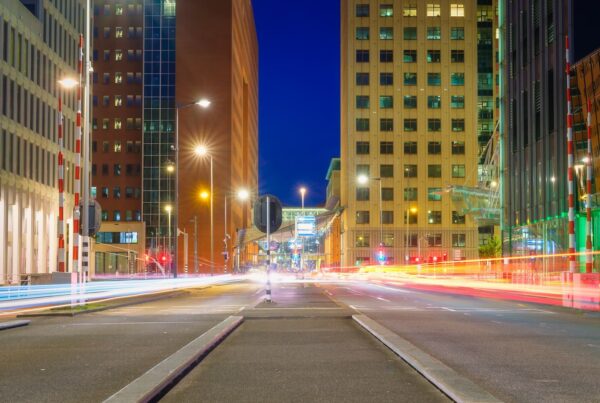To highlight the wide diversity of journalism innovation projects proposed by our 100% Journalism finalists, we’re running short Q & As with our ten finalists.
 Though they’re not usually the sexiest aspects of a major metro area, shipyards, railyards and container transit systems in a port city like Los Angeles make up a huge portion of commerce and industry vital to a country’s economy. The downside? Traffic, pollution and stress to aging local infrastructure.
Though they’re not usually the sexiest aspects of a major metro area, shipyards, railyards and container transit systems in a port city like Los Angeles make up a huge portion of commerce and industry vital to a country’s economy. The downside? Traffic, pollution and stress to aging local infrastructure.
Journalist Richard Risemberg and his partners at GRID Logistics have a point of view on all that, but they’re also keen to research the effects of the port on local transport systems and find solutions for the future.
Ebyline spoke with Risemberg about his #Journo100 project proposal. The following is an excerpt of that interview, edited lightly for clarity.
Your project looks at big plans to revamp LA’s transport system.
Right now there are plans afoot to expand the southern end of the 710 freeway to 14 lanes, including an aerial truck viaduct and then to build a gigantic tunnel at the north end to bring [the truck route] under Pasadena to the 210 freeway. This would be horrible because all the pollution from the trucks would still be there, it would just be vented from this tunnel into the communities around it. It would basically extend the diesel death zone another four miles into some of the most charming neighborhoods in Los Angeles county.
How would you employ freelancers?
We want to use Ebyline’s freelancers to build up a body of articles examining a history of the I-710 corridor [where goods are shipped to/from the port], the actual state of things in various communities along the corridor—so actually interviewing not just the politicians but people who live in a house by the freeway, people who have to send their kids to a school by a freeway, homeowners in Pasadena, business owners whose businesses would be demolished to make room for the freeway, etc. There’s the political opinions and attitudes of the municipalities, since there’s about 18 cities along the route that we would be going through.
We’re trying to get a comprehensive view of the corridor, it’s history, it’s problems, and the various solutions being offered for it. Not just GRID. People are searching for a way out of this mess and we want to use Ebyline’s resources to get the big picture of it.
Describe for me the plan that GRID Logistics has to transform Los Angeles.
The Grid project is a more advanced, more compact system for unloading and transferring containers between ships and trains in the harbor. The cranes, instead of being separate from the storage yards, are built into a storage structure that can also sort the containers. So by consolidating the storage into the cranes themselves, which was a concept originated in the 60s by Henry Kaiser of Kaiser steel, you basically eliminate all the trucking activity within the ports.
We also wanted to address LA’s traffic concerns, especially in the I-710 freeway corridor where the air pollution is so bad. Instead of just putting stuff on a train that goes into a trench in the existing Alameda corridor, we want to build underground rail tunnels using large diameter water pipe with unmanned robotic shuttles, which increases efficiency, safety, and reduces pollution and congestion.
So is the GRID plan in talks to be implemented?
We’re in the middle of reaching out to the various municipalities and stake holder groups. Because we envision using private money for most if not all of it there’s not much need to get more than permission to do. Since we envision putting as much as possible of the freight pipeline in the bed of the regional rivers that parallel the freeway routes and then remediating those routes so they’re no longer concrete trenches but they’re something more beautiful, we have to deal primarily with the Army Corps of Engineers who have reviewed the project and said it looks great to them.







